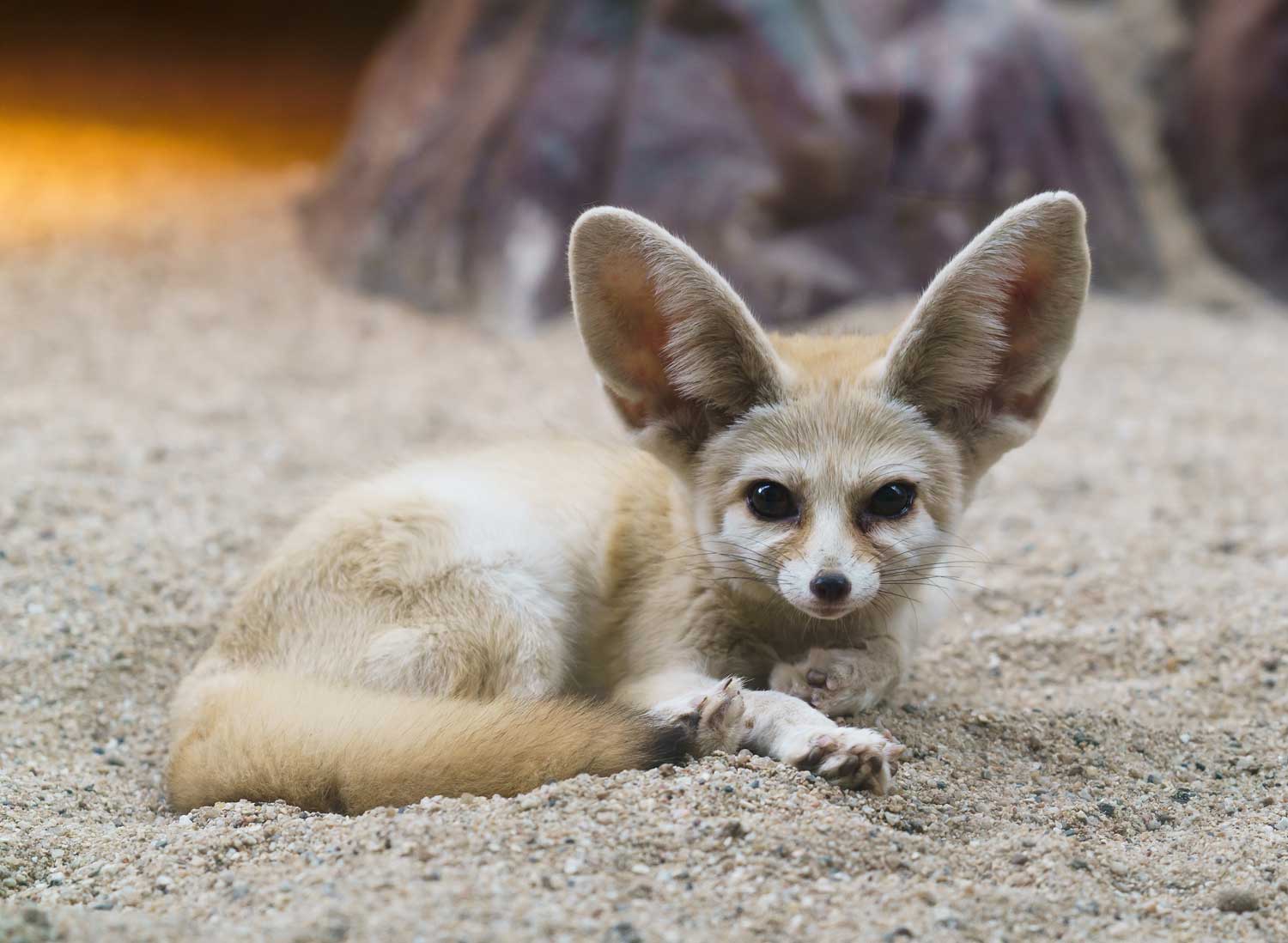Wild Relatives: The fennec fox

Editor’s note: Our Wild Relatives story series will explore the connections between our local wildlife species and related animals from around the globe. By learning about these exotic species, we hope to foster appreciation for the remarkable creatures that live in our backyards and neighborhoods.
Red foxes are often described as cunning and clever and sly, and while those adjectives may also be appropriate for the fennec fox, there's another descriptor that may first come to mind: cute. With large ears that are disproportionate to their size, cute seems like an apt description of the fennec fox, but there's much more to them than that.
But first, let's address those ears. A fennec fox's ears can be 4 inches to 6 inches tall. That might not seem all that big, but consider that fennec foxes are the smallest foxes in the world, only between 9 inches and 16 inches long. That means that their ears can be half as long as their bodies, the San Diego Zoo reports. Their tails are quite long too, stretching as much as 12 inches.
Fennec foxes typically weigh between 2 pounds and 3 pounds. Compare that to our red foxes, which weigh between 7 and 30 pounds, according to Animal Diversity Web.
Desert dwellers
Their big ears aren't just for hearing. They actually help the foxes stay cool, which is essential in the desert habitat where they live. Fennec foxes are native to the Sahara Desert in North Africa and other desert climates on the Arabian Peninsula in the Middle East and the Sinai Peninsula in Egypt, according to National Geographic.
How do their big ears help them beat the heat? The large surface area in their ears allows them to release more body heat, keeping their bodies from overheating, the Smithsonian National Zoo reports.
It's not just their big ears that help them thrive in the intense desert climate where they live. Fennec foxes have the lightest-colored fur of all the fox species, and the light color provides camouflage in the sandy desert habitat. Plus they have heavy fur on their paws both to give them traction when running in the sand and to protect their paws from burning on the hot sand, the National Zoo reports.
Even their breathing rate is well adapted to the heat of the desert. As they get hotter, fennec foxes begin to pant to help cool their bodies, climbing to as high as 690 breaths per minute.
Creatures of the night
Another way fennec foxes beat the heat is by being active mostly at night. Their nocturnal behavior also helps protect them from predators like hyenas and birds of prey. Even humans are predators for these canids because fennec foxes are sometimes hunted for their fur or trapped to be sold as pets, the San Diego Zoo reports.
To stay safe and cool during the day, fennec foxes stay underground in their burrows. Fennec foxes typically live near other foxes, with groups of about 10 foxes creating small communities with their burrows all in close proximity. Burrows can be dug as much as 3 feet deep, where it is cooler than at ground level.
When they emerge from their burrows, they are on the hunt, and their large ears are useful for hearing prey under the sand. Once they hone in on something, they pounce, using all four feet to dig into the sand to get it, according to the National Zoo.
Fennec foxes eat insects such as locusts and grasshoppers as well as rodents, lizards, birds and bird eggs. They are skilled hunters and capable of killing prey larger than themselves. They do not exclusively hunt, however. They are omnivores and will also eat fruits, leaves and roots. Eating plant matter helps them stay hydrated because they have little access to water in the desert.
Solo lifestyle
Although fennec foxes often establish their burrows near other foxes, they are considered solitary rather than social. For breeding purposes, the foxes are monogamous, mating with the same partner for life, the San Diego Zoo reports.
Although normally solitary, the male foxes do become aggressive during breeding season, and they defend their territory by marking it with urine. Babies, called kits, are usually born in March or April after breeding in January or February. The males will defend their female mates during gestation and after the kits are born.
Kits are born with fur, but they are blind and don't open their eyes for a week or two. They are able to walk when they are about 2 weeks old. In the few weeks after the kits are born, the male foxes will tend to the females, bringing them food, the Smithsonian Zoo reports. The kits will nurse for a few months, but they remain reliant on their mothers until they are between 9 months and 11 months old.
